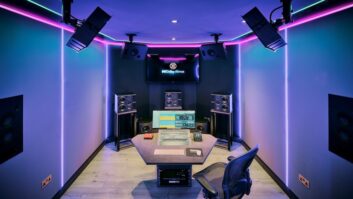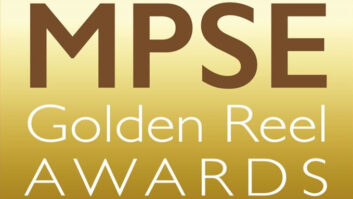
There are any number of reasons that an established artist, producer or engineer might leave the friendly confines of a commercial recording facility and move back home. It’s been happening for decades now, driven by the reduced cost of technology, avoidance of horrendous commutes, or simply a change of pace and a different way of life. But there are an equal number of reasons that many stay put, or even return to the fold of a recording community after years alone in the wild, with the most oft-cited reason being the need to bounce off of other creative people and interact with the world of ideas.
Mastering engineers are no different. In fact, of all the audio disciplines, mastering engineers would seem the most suited for a professional life in isolation. The majority of the work is detailed and precise, requiring intense, non-interrupted listening. And in recent years, according to my own non-scientific sampling of contacts on the high end, up to 90 percent of the work across the board is unsupervised. Mastering engineers receive files, work on them, and then send them out for approval. Changes are made from notes sent in text messages, over Facetime or in a late-night email. A few days later the track is off to iTunes, a replication facility and/or a pressing plant.
Bob Ludwig saw the writing on the wall years ago and moved from New York City to Portland, Maine. Doug Sax moved The Mastering Lab from Los Angeles to Ojai. Airshow Mastering long ago expanded from the D.C. area and added a facility in the recording hotspot of Boulder, Colo. The point was, and is, that the process of mastering simply requires the golden ears of a mastering engineer and a room that was true.
But mastering is much, much more than a mad scientist twiddling knobs in a dark room with big speakers and fine-grain EQ. And the desire of mastering engineers to interact with clients is no different than in any other part of the chain. Yes, when a file comes in from Europe and simply needs a turnaround, send it off. But when Colbie Caillat brings in stripped-down acoustic versions of The Malibu Sessions, to be released on her own new label, it sure is nice to have her in the room (and on the Mix cover).
Two conversations this month with A-list mastering engineers brought this point home to me. Eric Boulanger had been working with Sax up in Ojai for about seven years, and when the facility closed, he took the opportunity to move to L.A., where he moonlights as a session violinist. His one caveat: He needed to be around creative people. It didn’t matter what the art form, he says, and he didn’t need to be in the heart of rock ‘n’ roll land. He just wanted to spend a part of each day interacting with creative types. The work would get done.
Likewise, Vlado Meller left New York City a couple of years ago and set up shop in Charleston, S.C. At this point in his career, following 35-plus years in and around the major label scene, most of them at Sony, Meller could have hung out a shingle most anywhere and his clients would have followed. He found a spot in the Wes Lachot-designed Truphonic and has continued with his major label work and picked up a slew of independents. The attraction to Meller, he says, is that it’s how he’s used to working, with tracking, mixing, mastering and live production all under one roof. It’s the way he feels most comfortable, like his days at Sony. When he was finishing up Andrea Bocelli’s Cinema recently, engineer Humberto Gatica flew in from Tuscany for the sessions. Kicking it old-school.
There’s a balance, to be sure, in knowing when to dig in and work in isolation, dialing in your focus and your skills. But there’s also a time to bounce ideas off a client in the same room, or a colleague down the hall, or an artist as they grab a water and sit down for playback.
Bouncing off of other creative people isn’t always possible, but it is necessary, if even for a long lunch and a break from yourself.





